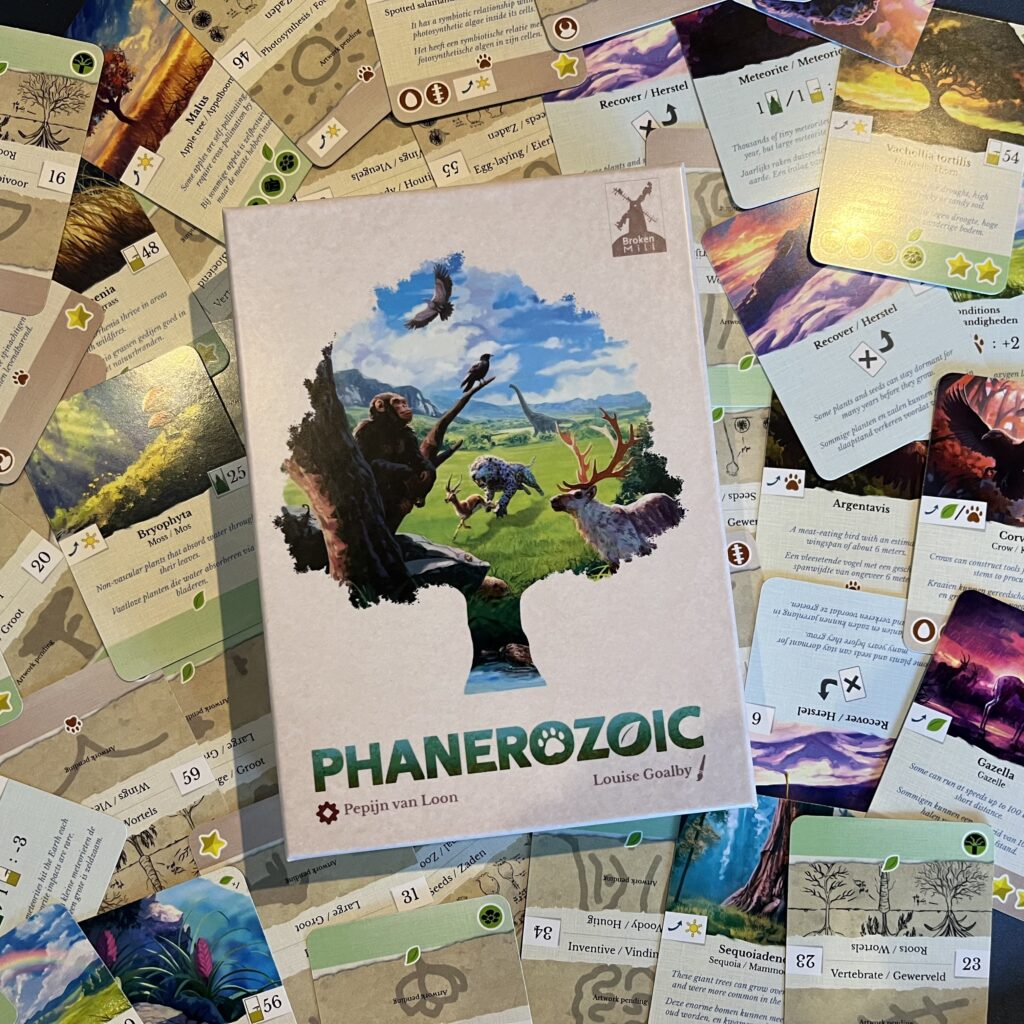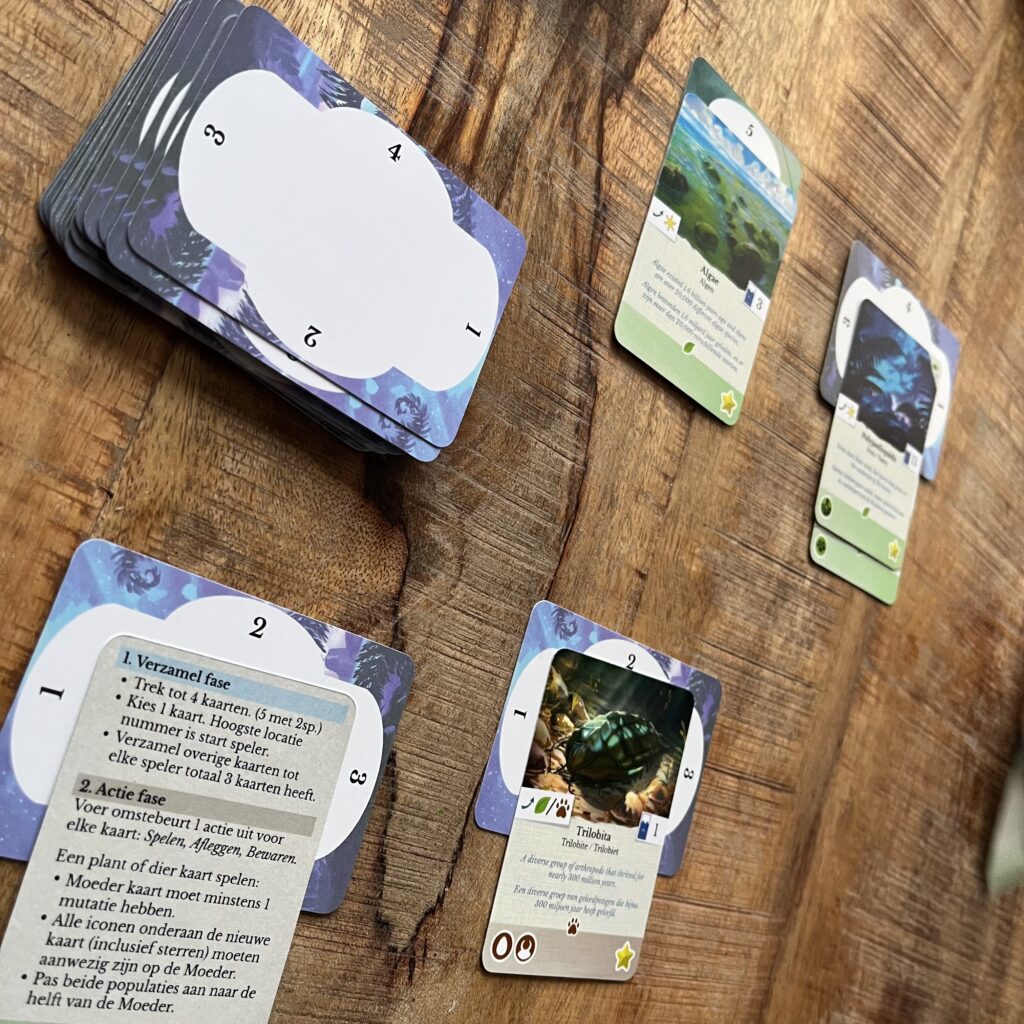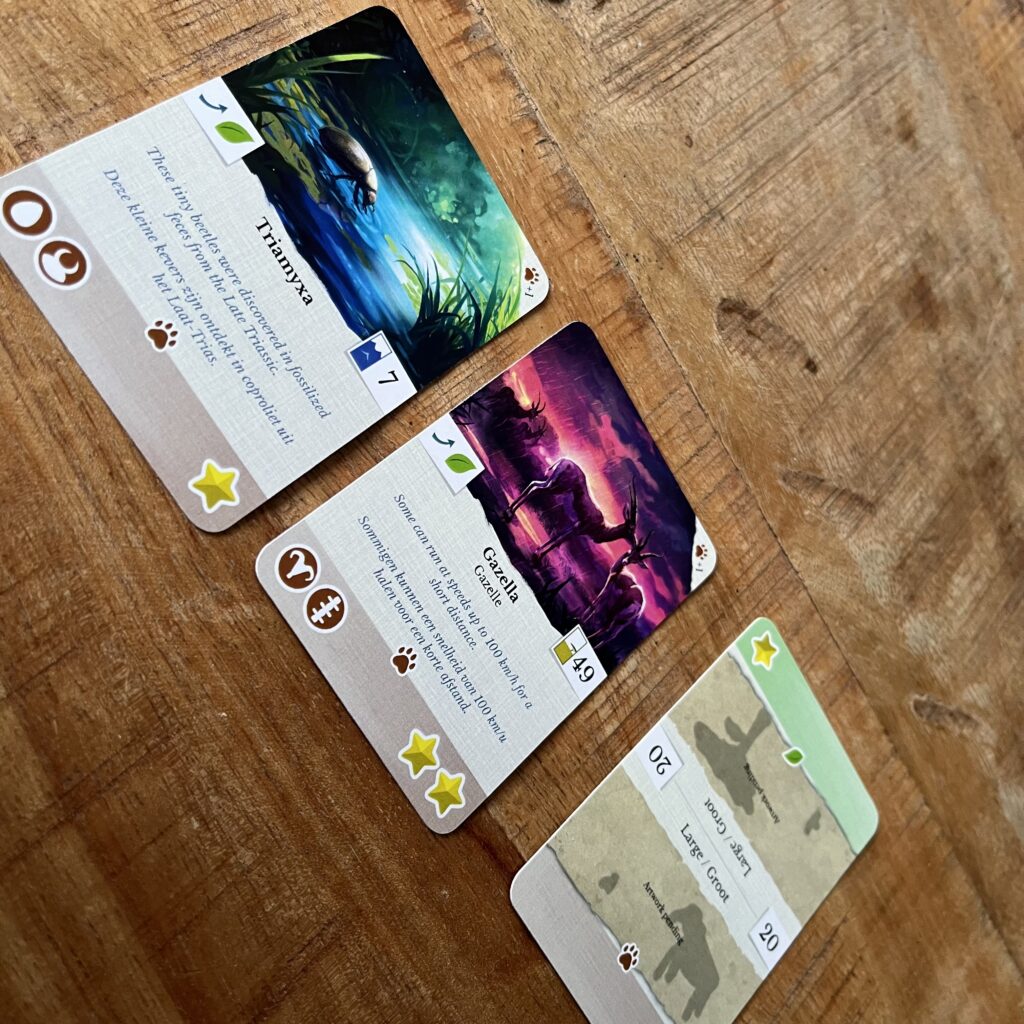Phanerozoic is the latest game from Pepijn van Loon, a highly evolved homo ludens, or: playing man. Previously, through his own publisher Broken Mill, this boy from the low countries developed Heroes of Tenefyr, a cooperative deckbuilder, and the colorful game World Stitchers. Now it’s time for plants and animals to evolve, mutate and die out – or just blossom in order to achieve your personal goals. Will you be the best at influencing the food chain in Phanerozoic? Now live on Kickstarter. We got the opportunity to test a prototype and as a result the below artwork is not final.
To liberally translate Wikipedia – since I am not a biologist, ecologist or geologist – for a moment: the Phanerozoic is the current and last of the four known geological epochs in the geological time scale of our Earth’s globe, covering the period from 538.8 million years ago to the present. That’s pretty old, even this thirty-something must confess. The Phanerozoic is the era when abundant animal and plant life spread across the earth, diversified and colonized various niches on the Earth’s surface. This began with the Cambrian, the period when animals first developed hard shells that are clearly preserved in fossils. Animals and plants mutated, evolved and became extinct. Exactly what players will also experience in this game.

In the game, each player is given a set of secret goals for which the player can earn points at the end of the game. Players earn points if certain animals and/or plants did or did not survive and become extinct, as well as points for specific types of cards/mutations.
During the game, players will play new plants and animals, mutate, evolve and go
then the hungry plants and animals search for food. If there is not enough food then the population decreases. Very hungry plants and animals can also cause other plants or animals to become extinct. Overpopulation can become a big problem, so players must puzzle cleverly and help certain cards along the way by playing correct mutations. For example, during one game we had an oversized group of scorpions pulverizing other animals, but fortunately this was solved by teaching the scorpions some photosynthesis.
But how will players evolve, mutate and play cards? Players first begin to draft cards in a slightly different way. Players get cards in hand and choose one. The remaining cards go into a shared pool from which players then also trot out. Players are left with three cards and use them to perform actions.
Cards can be played, discarded or kept. To play an animal or plant, one of the plants or animals present – at the beginning there are algae and trilobite – must be suitable as a precursor to the new card. There must be a mutation and there must be matching characteristics. In addition to animals and plants, there are mutations to give animals or plants new properties and also events with one-time effects.


After players take actions, the plants and animals start eating in order of their locations (as indicated on the cards). Each animal or plant has a population quantity to be fed by sunlight, plants and/or animals. The maps basically eat in the same locations and the size determines how much they have to eat. Depending on feeding, populations grow and populations become smaller.
Phanerozoic has an intriguing puzzle where it is interesting to mutate the plants and animals to play new cards and also influence the food chain to achieve your personal goals. This does make it a hefty puzzle and because of this, this can be quite complex to take into account both the game and your opponent’s possible actions while also trying to guess their secret goals to thwart them in such a way that their chance of victory becomes extinct. The mechanics are cleverly put together, but so expect a brainteaser is a small box.



